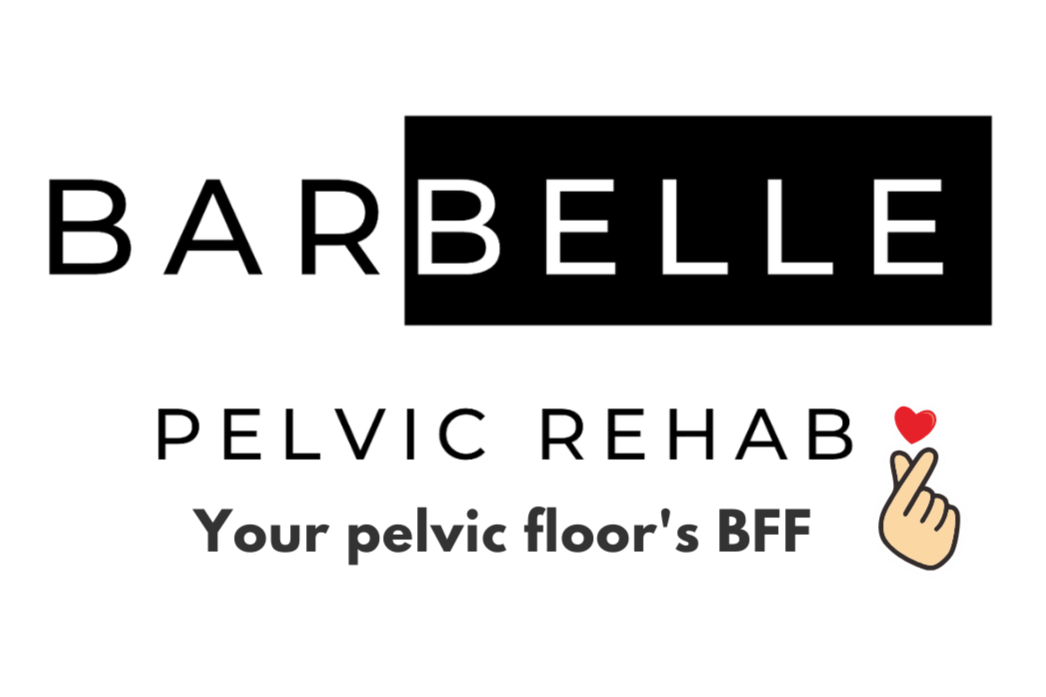Pelvic Pain & Pain with Intimacy
Here’s the thing
We know what you’re facing is hard and we see how it impacts your daily life.
We take a holistic approach to healing and are dedicated to finding your unique drivers to help you achieve long term results.
Women’s Pelvic Health
If you’ve been dealing with pelvic floor issues, sexual physical complaints, urinary or bowel issues.
Or maybe you’ve had sciatica, lower back pain, deep buttock pain or pain with sitting for awhile and no one has been able to help.
You’re in the right place.
Typical symptoms associated with women’s pelvic pain complaints:
Pain in the vulva, urethra, bladder, ovary area and lower abdomen.
History of endometriosis and IC
Rectal pain, constipation, muscle spasms or anal fissures.
Dyssynergic Defecation
Intimacy pain or unable to tolerate penetration, feeling “a wall”, pain during or after climax.
Pain with sitting, lower back pain, SIJ pain or sciatica.
Urinary urgency, urinary incontinence, decreased urinary flow, painful urination, hesitancy when urinating.
Pelvic pain post-op hysterectomy, bowel surgery, gynecological surgery or other.
History of hernia or hernia repairs
Problem:
You can’t return to your prior level of activity because you’re experiencing pain, leakage, pelvic pressure or prolapse, ab separation, pain during intercourse, a C-section shelf, or scar tissue pain.
-
Pain can be common postpartum but it is not normal. It is a sign that the muscles aren’t functioning normally and that scar tissue needs to be addressed. We systematically address the root cause of your problem after assessing the pelvic floor, deep core function, hip strength and range of motion.
-
Whether you are dealing with leaking on the way to the toilet (urge incontinence), or with coughing, sneezing, activity (stress incontinence) - we can help. It is NOT just about kegels. We focus on if your pelvic floor has mobility and strength and then teach you how to connect this with your deep abdominals.
-
Pelvic heaviness is typically due to both tension and decreased endurance in the pelvic floor muscles. It may also be a symptom of POP (pelvic organ prolapse) but not always! It responds well to our 3 step method.
-
Heaviness and feeling like an organ is coming out is actually very common. We can assess this in both lying AND standing (because…gravity). Most mild- moderate prolapse patients report no more symptoms after finishing their rehab.
-
Diastasis Recti (DRA) is due to the thinning of the linea alba during pregnancy. Many of our patients get excellent results with correctly educating on deep core activation through assessment and then progressively challenging the core.
-
Overactive pelvic floor muscles, lack of sensation, scar tissue from tearing can all impact how intimacy feels postpartum. We can help.
-
Scar tissue in the abdomen can impact bowel function, the ability to contract your lower abs, bladder symptoms, pain with sex and can cause pain. We work within a protocol to improve tissue movement. Buh-Bye c-section shelf.
-
Perineal tearing can impact the tissue and how the pelvic floor muscles function. It is one of the most common causes of pain with sex postpartum. We can gradually work on this tissue to make it more flexible, less sensitive so you don’t have to live with that any longer.
-
Lower back pain and SIJ pain are common postpartum. It can be due to both muscle tension, weakness, instability of the deep core muscles, hips. We will systematically address your root cause and start you on a plan for healing. The pelvic floor, hips and deep abs are critical structures to prevent pain in these areas. We address these complaints with postpartum rehab, it might be your missing link.
After working with us…
You’ll go from…
Having a poor understanding if your triggers for pelvic pain
Unable to relax your pelvic floor muscles, abs or hips
Limited sitting due to pain, difficulty traveling, painful sex with partner
Limiting exercising due to fear of increasing pain levels
Spending less time with friends and family
Having difficulty being productive at work due to pain
To this…
Having clarity of triggers and having a game plan when they do come
Knowing how to relax your pelvic floor, abs and hips and how to help yourself with tools at home.
Improve sitting time to allow you to travel for work.
Return to intimacy and connecting with your partner again
Exercising without fear of increasing pain
Feel more like yourself again
Q: I’ve seen so many providers – could it be my pelvic floor?
A: Many providers have the opportunity to run tests for you to rule out big and important things that need to be ruled out. When tests come up “normal” or there are painful exams or other signs it can indicate that the muscles, nerves or fascia can be the problem. Pelvic pain usually cycles between a pain-> spasm cycle and can have many triggers. Even when tests are normal or after a procedure the muscles can spasm due to inflammation in the area.
Think of a knee replacement surgery, all of the tissue surrounding the knee tightens up in response to the inflammation and pain. This can also happen following routine procedures and surgeries or even after a UTI. How long you have had your pain matters- if this sounds like you see us ASAP.
A: While everyone is different in their needs and preferences, our pelvic pain patients spend more time in the release phase of our 3-step method. This can include cupping, trigger point dry needling with or without e-stim, manual therapy work, visceral mobilization, myofascial release, internal and external pelvic floor muscle trigger point release.
While these techniques help calm the system down and relieve pain - we don’t stop here. We know that if we can resolve the real reason the muscles are tight you will have long term results. This means progression to exercises that help create balance in your body so your tight muscles can stop working overtime which is the secret to our results. Learn more about the road map: proven method
We also teach holistic methods such as a mind body approach and include the latest neuroscience education.
You’re a different woman than you used to be… in more ways than one.
You’re ready to show up like the mom you’ve always wanted to be.
You’re ready to pour from a cup that is no longer empty.
You’re ready to just feel like yourself again.
Maybe you are sitting there at 2 am breastfeeding with some neck pain and tailbone pain.
Maybe you are hoping to return to your exercise program but things really don’t feel right yet.
Maybe you are driving your kids around to sport games and you’re adjusting in your seat because you are uncomfortable.
Maybe you are 8 years postpartum and still dealing with c-section scar pain.
Maybe you’re showing up differently because your pelvic floor feels heavy, your lower back starts to bother you, and you’re no where close to being comfortable trying intimacy.
By the end of the day your pelvic floor is calling the shots.
If you’re done, so are we.
Our famous method combines the best of pelvic floor rehab, accountability to your goals and truly compassionate care.
Reconnecting with your identity is possible.
Healing your body also helps heal your mind in such a deep way.
Here’s what that means for you when you heal:
Feeling excited to call a babysitter for a date night because you now feel confident. You have the capacity because you are no longer in pain at the end of the day.
Not only rekindling your intimacy with your partner but improving it because you are no longer worried about pain or making your prolapse worse.
Hold your little ones as long as your heart desires, not just as long as your body allows.
Wearing cups and tampons again during your cycle without fear of them falling out.
Going to that workout class you’ve been eyeing because you are no longer afraid of unexpected leakage or sitting out of exercises because of it.
Women just like you…
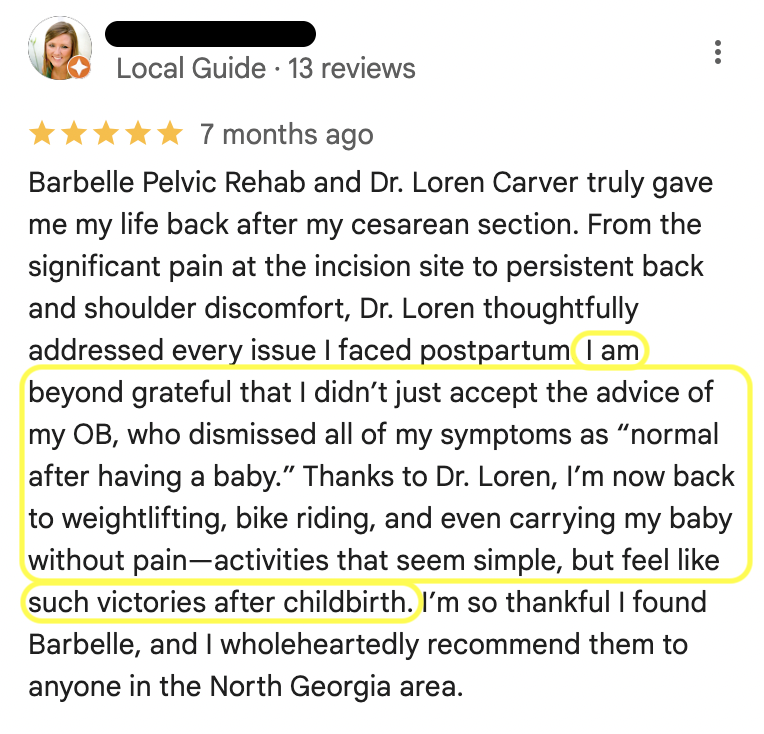
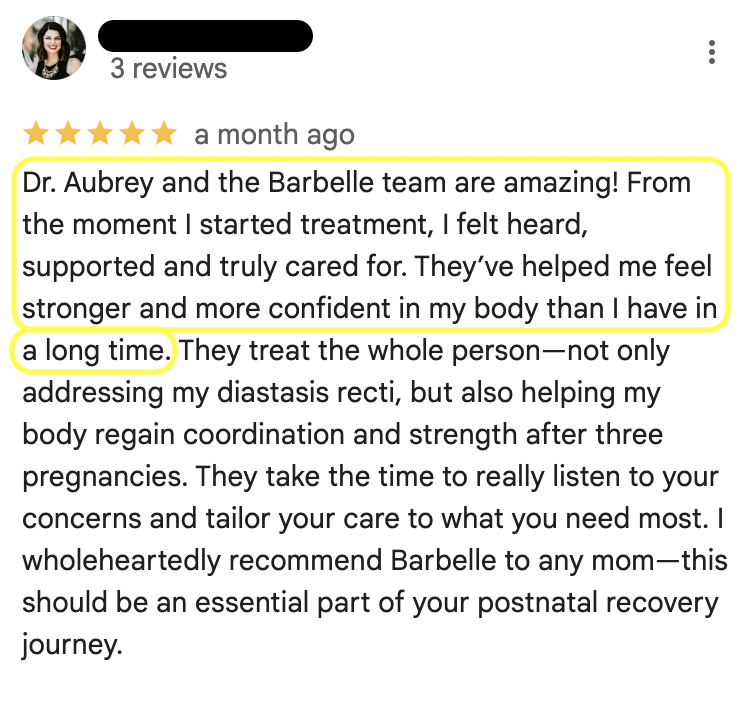
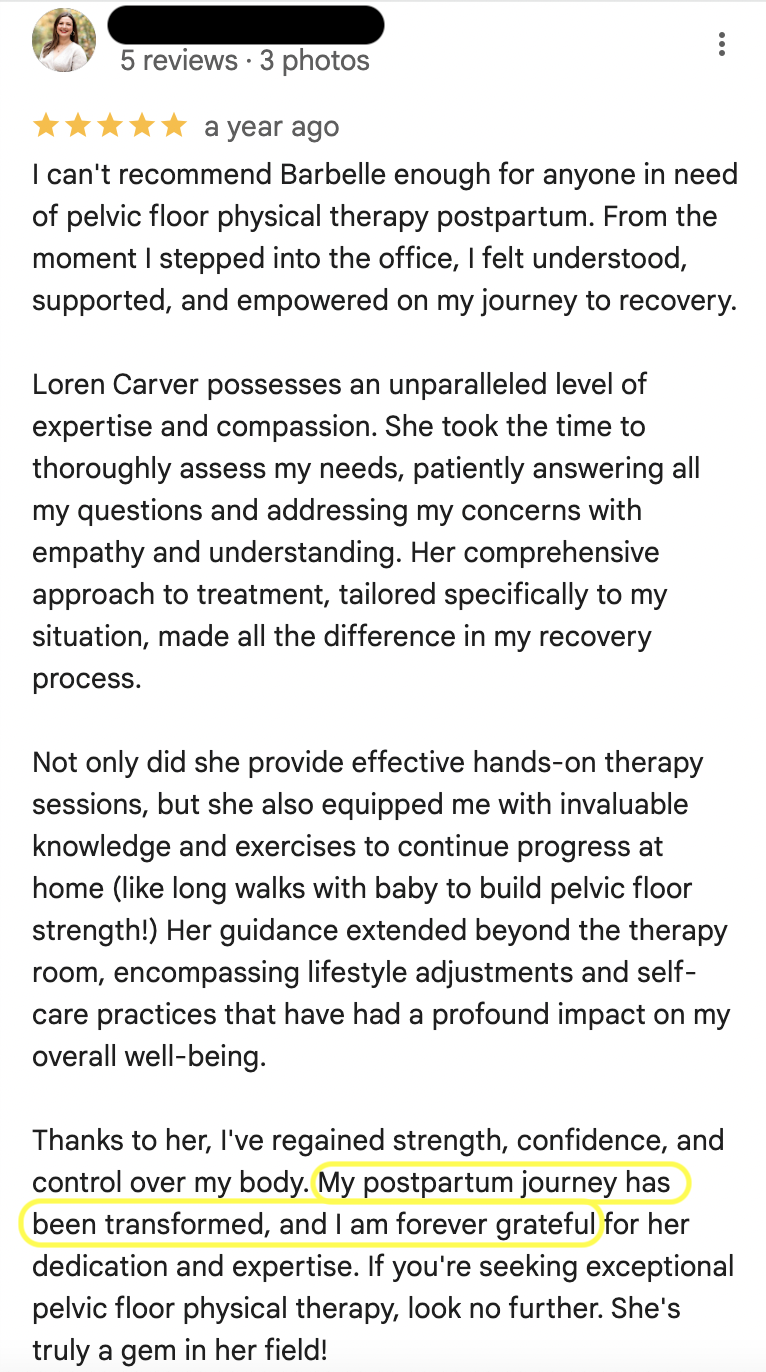
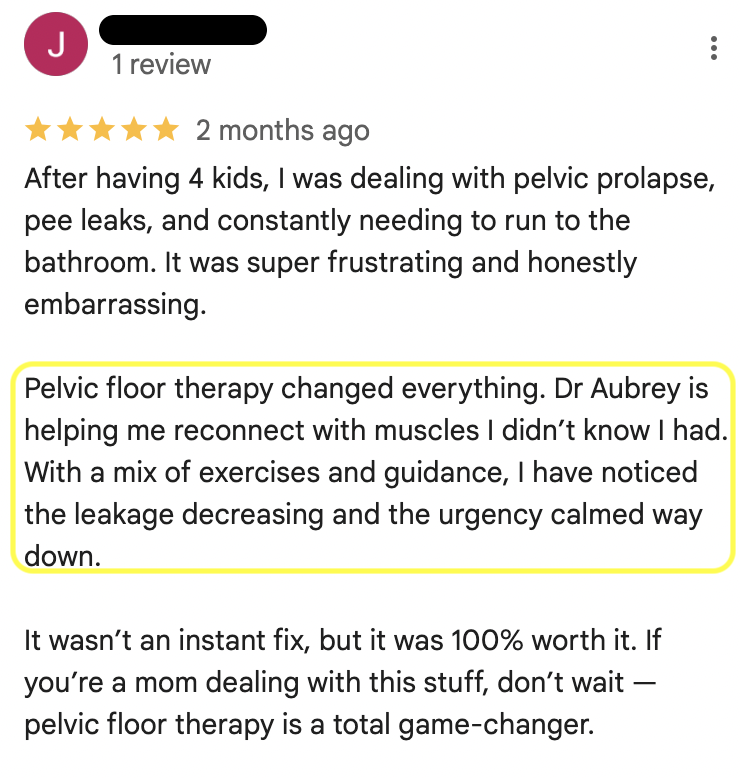
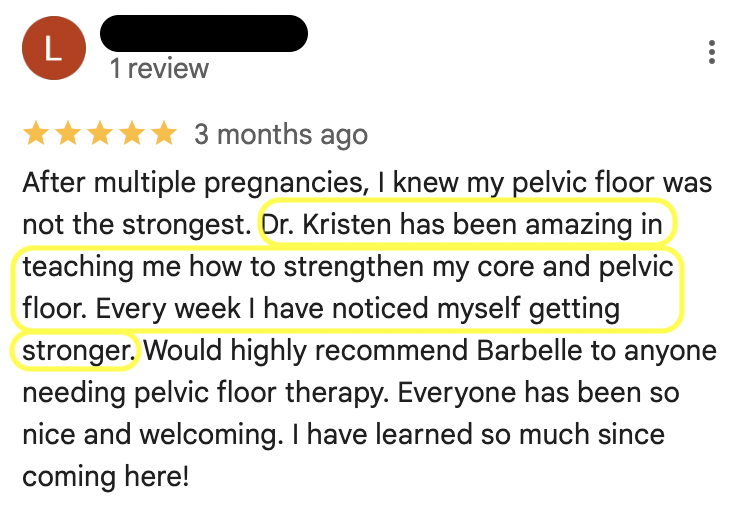
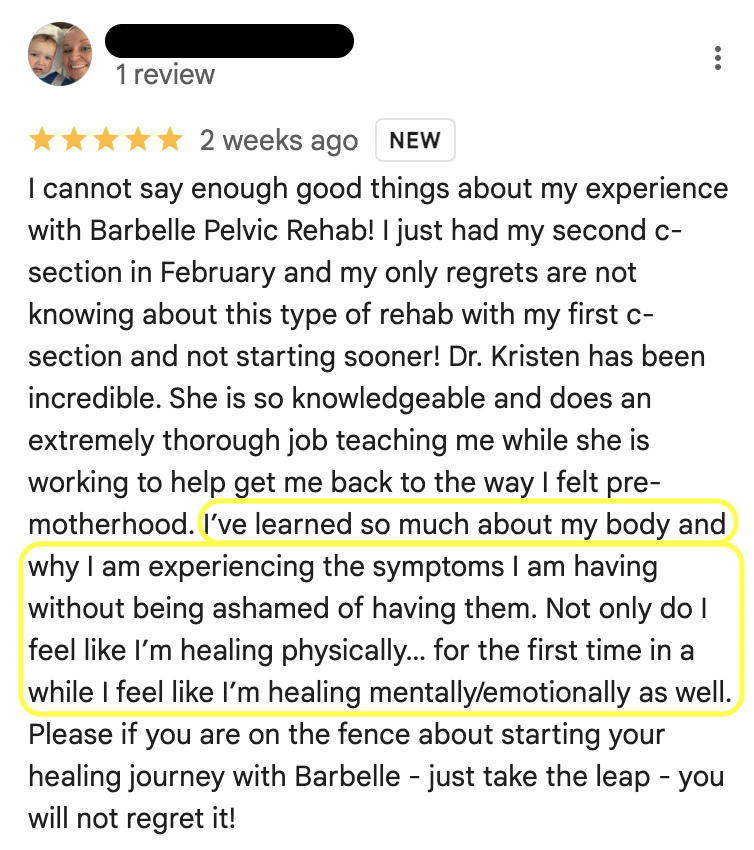
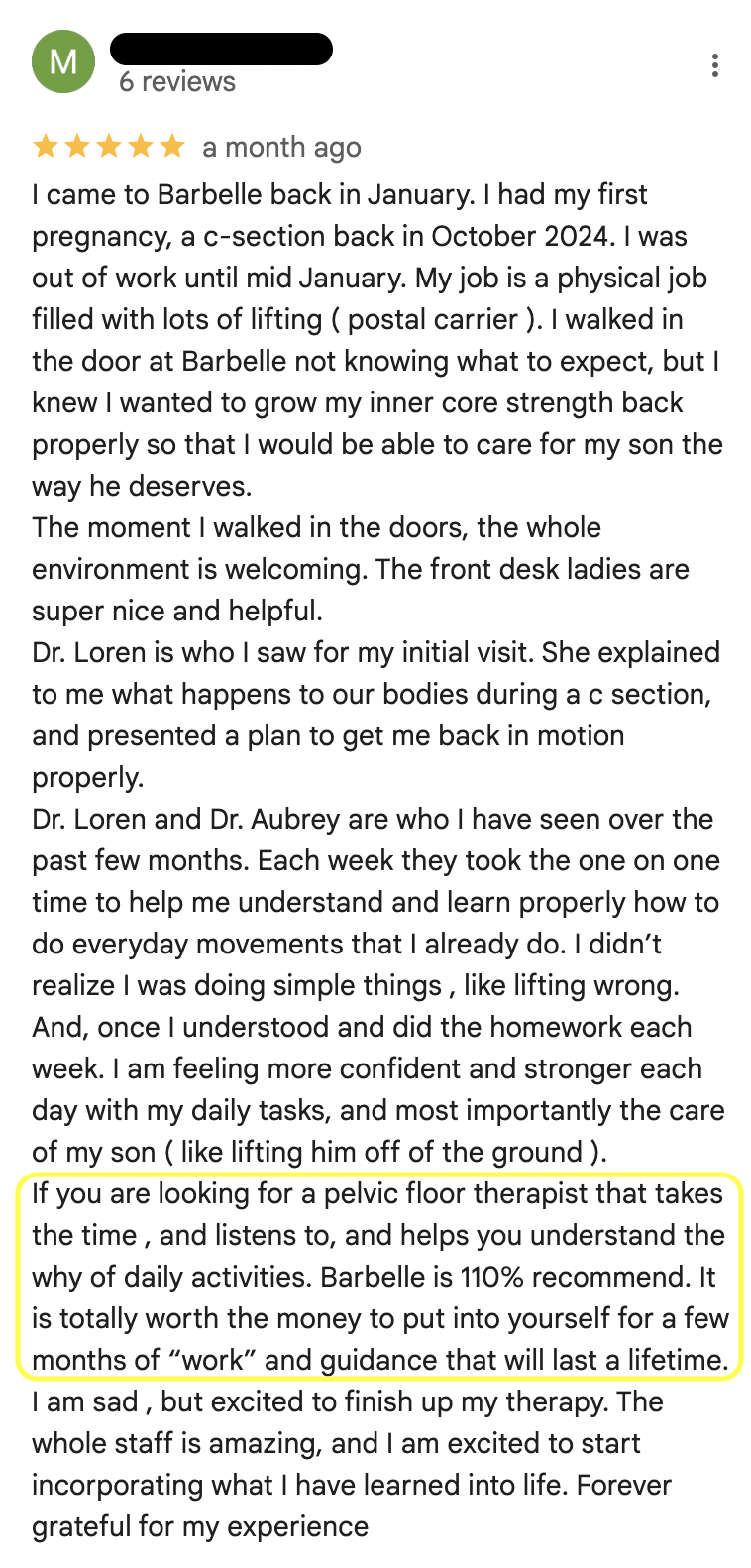
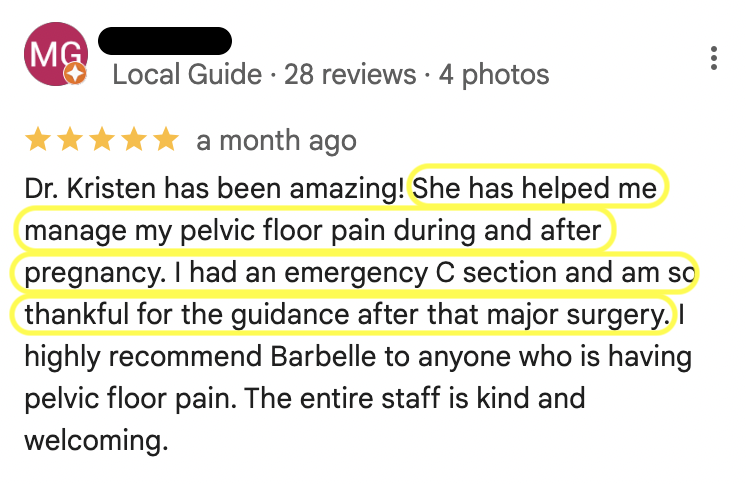

Our Method
1. Release
Identify the root cause your postpartum symptoms like leakage, back pain, painful sex and pelvic heaviness (for example). We will start hands-on therapy and treatment aimed at lengthening the tissue first, decreasing pain, treating scar tissue, trigger points, muscle spasms, fascia limitations and joint stiffness.
2. Reload
Focus on addressing strength around the pelvis, pelvic floor, deep core, abdominals and hips. Our main goal is to address asymmetries, continue to work on scar tissue and mobility to set you up for the last phase of rehab.
3. Return
This is where the magic happens. In the return phase we focus on the activities like jumping, lifting objects (because babes are heavy!), single leg activities so we can get you all the way back to your desired goal and be the mom you’ve always wanted to be without pelvic floor symptoms!
